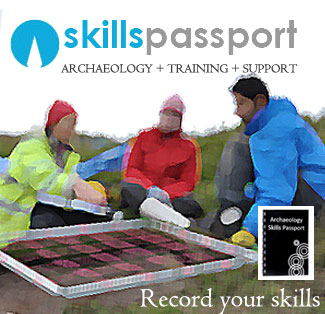It is essential that all field and office work is carried out safely, and that everyone is aware of any potential problems and the site-specific health and safety issues.
You must be aware of at least the basic levels of health and Safety requirements, if you feel that you are working in conditions you feel are unsafe, then you are fully entitled (and required) to bring this to the attention of the site director/manager or senior figure. Request to see the Health and Safety Manual, as every legitimate Contractor should have one.
Think about what type of soil you are working in, a sand section is a lot less stable than clay sided one , a rubble section has the added danger of falling debris. Always review the safety of a trench before going in – it is your life – the integrity of a trench sides may change depending on weather, size of spoilheap or with heavy machinery passing by. Think about what you must do to stay safe.

PRINCIPLE: Recognise the various PPE requirements and able to choose appropriate for various situations
- Novice – understands the importance of PPE .
- Competent – Is able to choose appropriate PPE
- Proficient – can confidently discuss the merit of each form of PPE and the relevance to the situation.
Top tips: It is important that you know why you need PPE and are trained to use it correctly. Otherwise it is unlikely to protect as required.
The most common PPE will be Helmets, Boots, Gloves and Hi-Viz waistcoats. Another important item should be the kneeling mat or kneepads, which are often overlooked, but will protect you against a number of kneeling dangers.

PRINCIPLE: Be aware of he various H&S issues on a field work project, ranging from trench safety, tool safety and general safety of both co-workers and public.
- Novice – understands the importance of H&S but unsure of proper action of all but most obvious examples
- Competent – Is able to recognise H&S issues but needs some prompting to act appropriately
- Proficient – can confidently recognise the basic Health and Safety issues and understands the appropriate action to be taken.
Top tips: Project safety is up to everyone, if you see a mattock lying on the ground for example, politely move it somewhere safe, and suggest whoever left it there should be more careful in future. The main concept is to exercise common sense and be aware of the hazards around you in order to minimise the chance of accident or injury.
There should be a person who is designated as the responsible site coordinator and have access to a trained first aider as well as contact details of the nearest doctor or accident emergency unit.
RISK ASSESSMENTS
Risk assessments should be available for you to view at any time and will be specific to the particular site that you are on. They should list the possible risks that may be encountered and how best to reduce the potential for each hazard.
METHOD STATEMENTS
This document provides details on the entire methodology of a project, including the provision of facilities, First Aid and other aspects of safety. Ensure this is not a pro-forma; as the project leader must have considered the nature of the site you are working on, rather than using a generic document.
REPORTING ACCIDENTS
In the event of an accident, there must be a recognised means of reporting the event, in order to provide a written account of the accident, the severity and possible reasons. This will ensure that the correct procedures had taken place and can help prevent further occurrences. Ensure there is an Accident Book on site.
Links
Stay safe in archaeology (BAJR)

